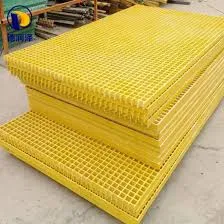
-
 Afrikaans
Afrikaans -
 Albanian
Albanian -
 Amharic
Amharic -
 Arabic
Arabic -
 Armenian
Armenian -
 Azerbaijani
Azerbaijani -
 Basque
Basque -
 Belarusian
Belarusian -
 Bengali
Bengali -
 Bosnian
Bosnian -
 Bulgarian
Bulgarian -
 Catalan
Catalan -
 Cebuano
Cebuano -
 China
China -
 China (Taiwan)
China (Taiwan) -
 Corsican
Corsican -
 Croatian
Croatian -
 Czech
Czech -
 Danish
Danish -
 Dutch
Dutch -
 English
English -
 Esperanto
Esperanto -
 Estonian
Estonian -
 Finnish
Finnish -
 French
French -
 Frisian
Frisian -
 Galician
Galician -
 Georgian
Georgian -
 German
German -
 Greek
Greek -
 Gujarati
Gujarati -
 Haitian Creole
Haitian Creole -
 hausa
hausa -
 hawaiian
hawaiian -
 Hebrew
Hebrew -
 Hindi
Hindi -
 Miao
Miao -
 Hungarian
Hungarian -
 Icelandic
Icelandic -
 igbo
igbo -
 Indonesian
Indonesian -
 irish
irish -
 Italian
Italian -
 Japanese
Japanese -
 Javanese
Javanese -
 Kannada
Kannada -
 kazakh
kazakh -
 Khmer
Khmer -
 Rwandese
Rwandese -
 Korean
Korean -
 Kurdish
Kurdish -
 Kyrgyz
Kyrgyz -
 Lao
Lao -
 Latin
Latin -
 Latvian
Latvian -
 Lithuanian
Lithuanian -
 Luxembourgish
Luxembourgish -
 Macedonian
Macedonian -
 Malgashi
Malgashi -
 Malay
Malay -
 Malayalam
Malayalam -
 Maltese
Maltese -
 Maori
Maori -
 Marathi
Marathi -
 Mongolian
Mongolian -
 Myanmar
Myanmar -
 Nepali
Nepali -
 Norwegian
Norwegian -
 Norwegian
Norwegian -
 Occitan
Occitan -
 Pashto
Pashto -
 Persian
Persian -
 Polish
Polish -
 Portuguese
Portuguese -
 Punjabi
Punjabi -
 Romanian
Romanian -
 Russian
Russian -
 Samoan
Samoan -
 Scottish Gaelic
Scottish Gaelic -
 Serbian
Serbian -
 Sesotho
Sesotho -
 Shona
Shona -
 Sindhi
Sindhi -
 Sinhala
Sinhala -
 Slovak
Slovak -
 Slovenian
Slovenian -
 Somali
Somali -
 Spanish
Spanish -
 Sundanese
Sundanese -
 Swahili
Swahili -
 Swedish
Swedish -
 Tagalog
Tagalog -
 Tajik
Tajik -
 Tamil
Tamil -
 Tatar
Tatar -
 Telugu
Telugu -
 Thai
Thai -
 Turkish
Turkish -
 Turkmen
Turkmen -
 Ukrainian
Ukrainian -
 Urdu
Urdu -
 Uighur
Uighur -
 Uzbek
Uzbek -
 Vietnamese
Vietnamese -
 Welsh
Welsh -
 Bantu
Bantu -
 Yiddish
Yiddish -
 Yoruba
Yoruba -
 Zulu
Zulu
Feb . 06, 2025 00:46
Back to list
fiber reinforced plastic tank
Fiber Reinforced Plastic (FRP) tanks have become a pivotal solution across industries for storage needs, offering a blend of durability, customization, and corrosion resistance. With an increasing demand for reliable storage solutions, understanding the nuances of FRP tanks illuminates their significance within contemporary industrial practices.
Authoritativeness in Industry Standards FRP tanks are not designed in a vacuum. They adhere to stringent industry standards, which make them credible and safe for industrial usage. Standards set by organizations such as ASTM (American Society for Testing and Materials) and ASME (American Society of Mechanical Engineers) provide frameworks that guide the quality and safety of FRP tanks. These standards cover aspects from materials used to the structural integrity and fabrication processes, setting a benchmark across the industry. Companies that produce FRP tanks must ensure compliance, which inherently makes these tanks a trustworthy choice for industries that cannot compromise on safety. Trustworthiness from Proven Performance The trustworthiness of FRP tanks is often validated by their performance over decades. In industries like petrochemical, water treatment, and food processing, these tanks have showcased outstanding longevity amidst aggressive conditions. Usually warrantied for several years, many FRP tanks continue to function well beyond their intended lifespan, a testament to their robustness and reliability. However, trust in these tanks is not just built on past performance; it is also sustained through regular inspections and maintenance. The non-corrosive nature of the materials used means that maintenance cycles are less frequent and simpler compared to their metal counterparts, thereby providing further assurance to industrial operators. In conclusion, selecting the right storage solution with a focus on material integrity, customization, and industry compliance is critical. FRP tanks emerge as a superior choice given their operational efficacy, adaptability, and endurance. Industries globally are recognizing this shift, moving away from traditional storage solutions to these engineered marvels, which not only meet but redefine storage standards. As the demand for robust and adaptable solutions rises, the expertise and proven reliability of FRP tanks make them indispensable in the modern industrial landscape.


Authoritativeness in Industry Standards FRP tanks are not designed in a vacuum. They adhere to stringent industry standards, which make them credible and safe for industrial usage. Standards set by organizations such as ASTM (American Society for Testing and Materials) and ASME (American Society of Mechanical Engineers) provide frameworks that guide the quality and safety of FRP tanks. These standards cover aspects from materials used to the structural integrity and fabrication processes, setting a benchmark across the industry. Companies that produce FRP tanks must ensure compliance, which inherently makes these tanks a trustworthy choice for industries that cannot compromise on safety. Trustworthiness from Proven Performance The trustworthiness of FRP tanks is often validated by their performance over decades. In industries like petrochemical, water treatment, and food processing, these tanks have showcased outstanding longevity amidst aggressive conditions. Usually warrantied for several years, many FRP tanks continue to function well beyond their intended lifespan, a testament to their robustness and reliability. However, trust in these tanks is not just built on past performance; it is also sustained through regular inspections and maintenance. The non-corrosive nature of the materials used means that maintenance cycles are less frequent and simpler compared to their metal counterparts, thereby providing further assurance to industrial operators. In conclusion, selecting the right storage solution with a focus on material integrity, customization, and industry compliance is critical. FRP tanks emerge as a superior choice given their operational efficacy, adaptability, and endurance. Industries globally are recognizing this shift, moving away from traditional storage solutions to these engineered marvels, which not only meet but redefine storage standards. As the demand for robust and adaptable solutions rises, the expertise and proven reliability of FRP tanks make them indispensable in the modern industrial landscape.
Related Products









